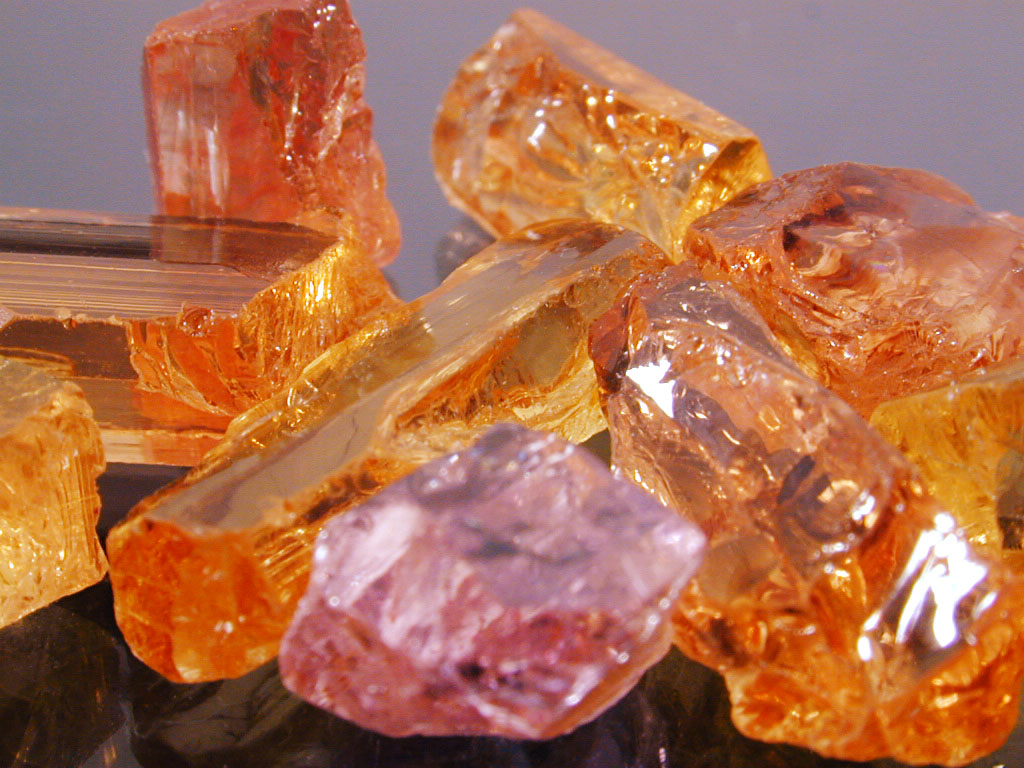
The ancient Greeks believed that topaz gave them strength and topaz is mentioned in the modern translation of the bible, although the word probably referred to a yellow stone, not necessarily true topaz.ĭuring the middle ages, the main source of topaz was from a deposit in the Erzgebirge Mountains in Germany. The island is now called Zabargad Island.Īncient Egyptians believed that yellow topaz received its golden colour from the Sun God, Ra. In addition, the island Topazios, after which the gemstone has been named, never produced topaz, but was a source of peridot, or olivine often confused as topaz. Gem traders recognised that quartz, beryl, corundum and olivine all had yellow variants and were not true topaz and that topaz could be other colours not just yellow.

Gem traders did not know that these yellowish stones were actually different minerals until about two hundred years ago. The name topaz has been used for any yellowish gemstones for at least two thousand years. Topaz can also be used as a raw material in the production of fluorine compounds, and in ceramic and glass manufacture. The steelmaking industry uses most of the refractory materials produced. They are also used to make moulds for casting glass and metals.

These materials retain their strength at high temperatures, so can be used in furnaces, kilns, incinerators, and reactors. Topaz can be a raw material for making refractory materials. Topaz is mainly produced for use as a gemstone for jewellery and ornaments. Also reported to be of Sanskrit origin from ‘topas’ meaning fire. The island was a source of peridot, often confused as topaz. It is the largest faceted stone in the world.įrom Topazios, the Greek name for an island in the Red Sea, meaning to seek. It weighed around 36 kg, but after being faceted into an emerald shape and polished, was reduced to 6.2 kg (still 31 000 carats). The El Dorado Topaz, also from Brazil, was discovered in 1984. It now weighs 4.6 kg but was cut into 172 facets over two years from an 11.8 kg stone. The American Golden Topaz is a famous gemstone. Some topaz crystals from Brazil are huge, as big as boulders and weighing kilograms. Because topaz is so fragile, it is difficult to cut and set. Hardness is the resistance to being scratched, but the ability to resist breakage is called tenacity. For this reason, topaz is quite fragile, even though it has a hardness of 8, and is often found in sections, rather than whole crystals. Topaz crystals have perfect cleavage, which means that it tends to break along certain plains, perpendicular to the long axis of the crystal. A crystal with a chromium impurity and a yellow coloured centre would be an orange topaz. When chromium replaces aluminium in the crystal structure of topaz, the crystal appears to be pink or red. Green topaz has a mixture of yellow-and blue-type centres. These anomalies can absorb certain parts of the light shining into the crystal, to produce either yellow or blue shades of colour. There are two dominant coloured centres in topaz crystals, produced by either a gap or an extra electron in the crystal structure. Unlike other gem stones, it is not always the impurities in the crystal that give topaz its colour. Topaz is a fluoro-silicate of aluminium, usually colourless, but can be white, yellow, light shades of grey, blue, orange, brown, green or pink. Source: Australian Gold and Gems - Gregory Clapin. Source: Geoscience AustraliaĮmerald cut topaz, 84 carats, Glittering Star Mine, Innot Hot Springs, Queensland. Transparent, blue, water-worn topaz crystal from Torrington New South Wales. Yellow corundum is called oriental topaz and yellowish-green andranite is called topazolite Sometimes yellow quartz or citrine, is called topaz or topaz-quartz. Like ‘fools gold’, there are varieties of false topaz. It is sometimes confused with quartz, although topaz is harder and forms different crystal shapes. Topaz is often associated with fluorite, cassiterite, and beryl. Gouttes d'eau (means water drop, colourless cut topaz crystals, similar to diamonds).mystic topaz (colourless topaz with an artificial coating, giving a rainbow effect).imperial topaz (yellow, brown, red, pink or pink-orange topaz),.pycnite (a columnar or yellow-white variety of topaz).precious topaz (yellow or orange topaz),.Some varieties of topaz have other common names: Common natural colours in Australia are clear, pale yellow and pale blue (see also Google Arts and Culture - Gems from the Safe). Topaz gemstones come in a wide variety of colours.


 0 kommentar(er)
0 kommentar(er)
